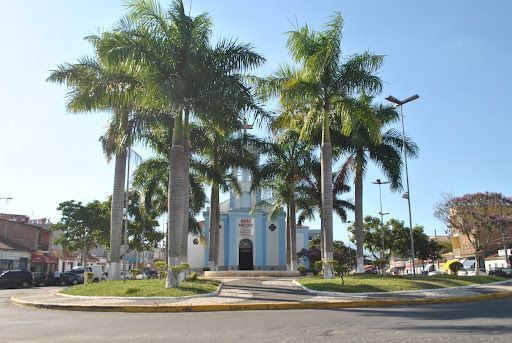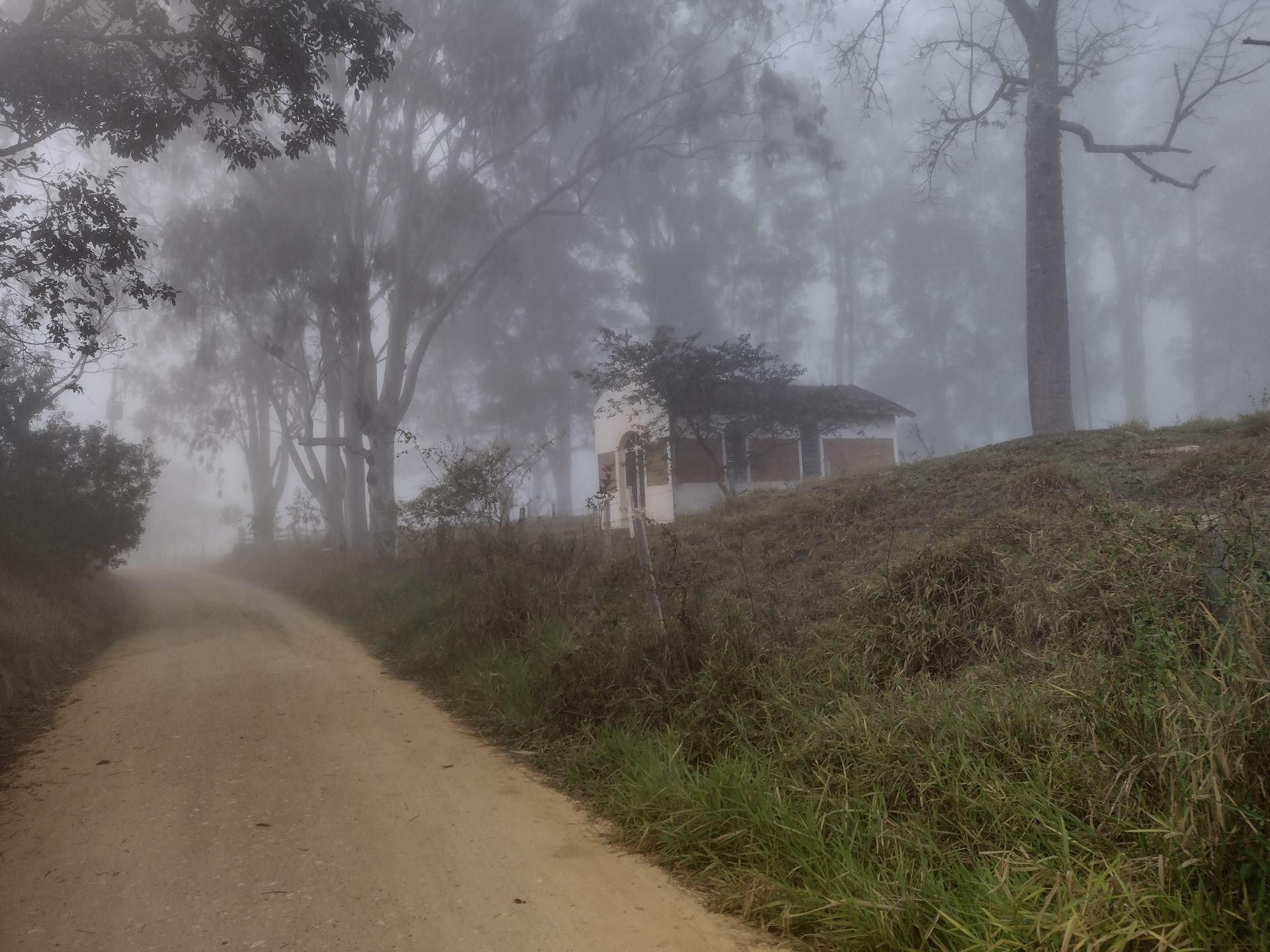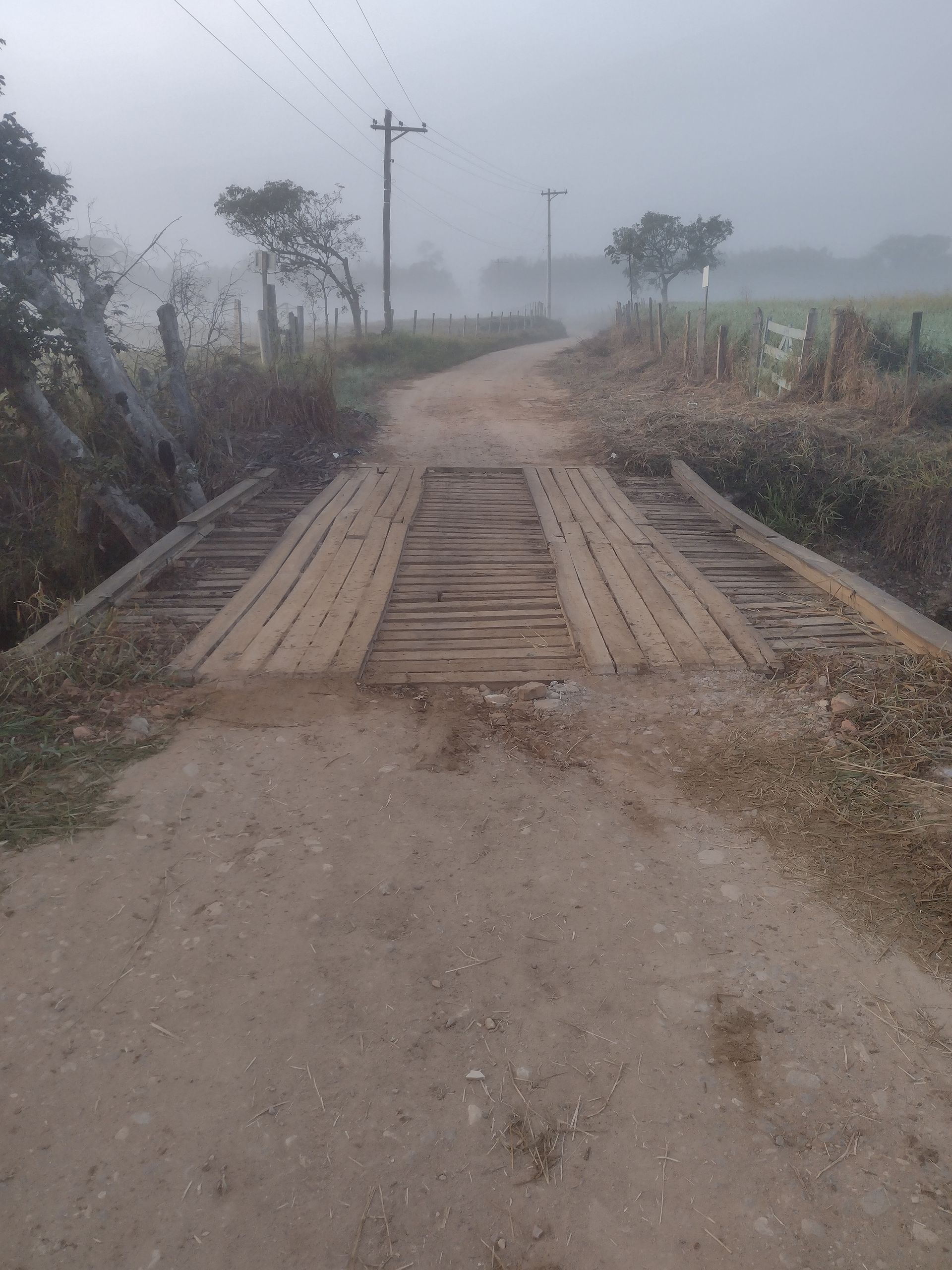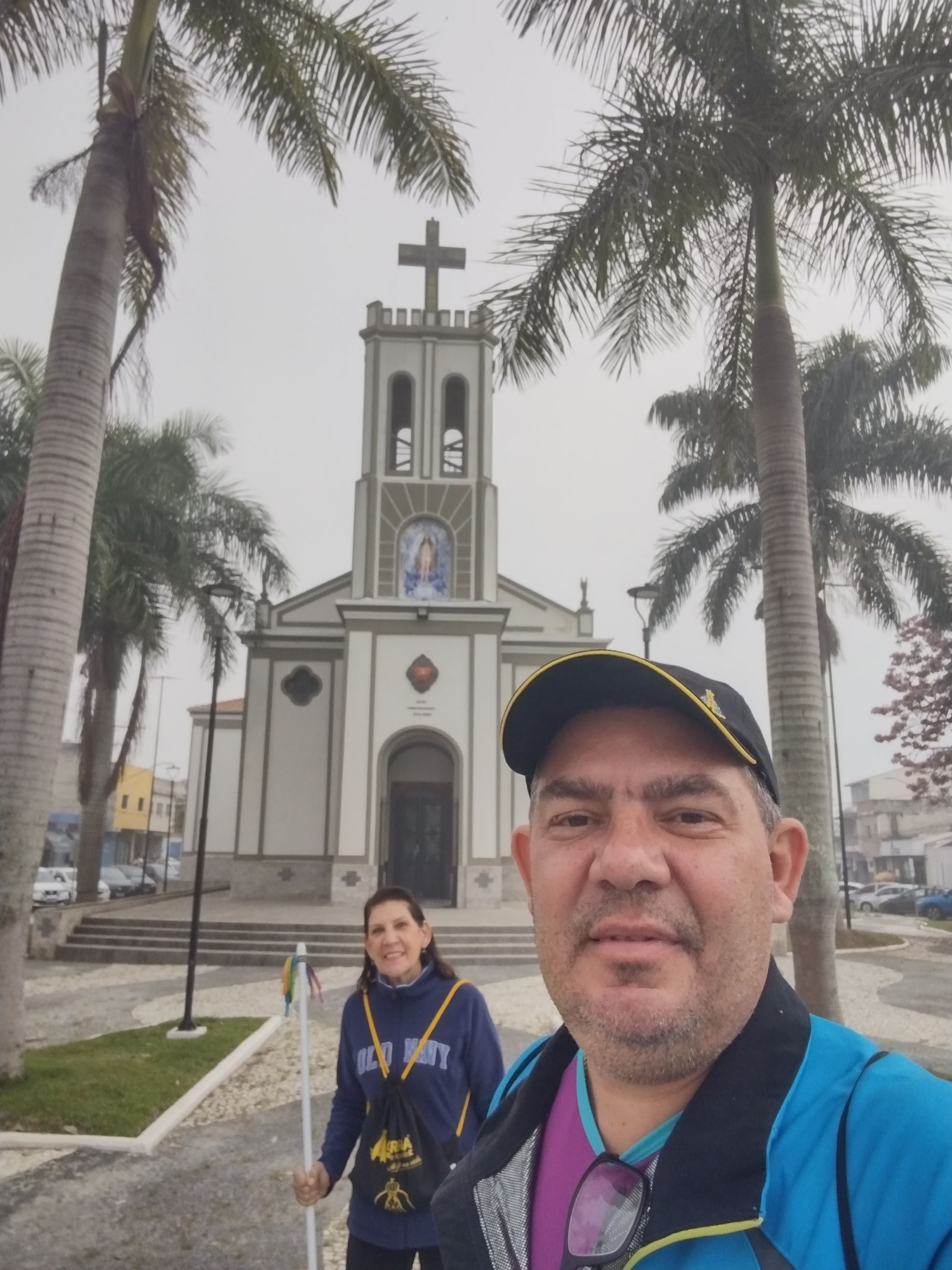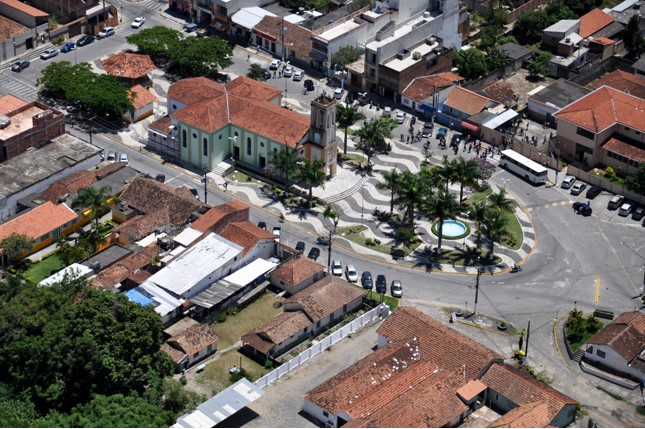Santana - SP
On this page, the Portal Peregrino da Esperança presents the city of Pindamonhangada, located in the interior of São Paulo, which stands out both for its historical importance and for its role in the economic, cultural and social development of the Paraíba Valley. The chosen Patron Saint was Our Lady of Good Success.
🕊️ “When all seems lost, it will be the happy beginning
of complete restoration.” (Our Lady of Good Success)
Characteristics of the City of Santana de Parnaíba - SP
Santana de Parnaíba is one of the most emblematic cities in the interior of the state of São Paulo, known for its rich historical and cultural heritage. Officially founded in 1625, the city was born in the context of the bandeirantes expeditions that left the then Vila de São Paulo towards the interior of the Brazilian territory. Its name pays homage to Santa Ana, the local patron saint, and has as a complement the term "Parnaíba", derived from the Tupi language, which means “bad river” or “difficult river”, in reference to the watercourse that borders the region. From its beginnings, Santana de Parnaíba stood out as a strategic point for incursions into the backlands, becoming one of the most important colonial centers of colonial Brazil.
The historic center of Santana de Parnaíba is, without a doubt, one of the city's biggest attractions. With over two hundred buildings listed as historical heritage sites, the place is a true open-air museum, preserving houses and churches with characteristics of the Portuguese-Brazilian architectural style, mainly from the 17th and 18th centuries. When walking through its cobblestone streets, visitors have the sensation of being in a setting frozen in time, where the bright colors of the facades and the wrought-iron balconies contrast with the tranquility typical of a country town. The Igreja Matriz de Sant'Ana, built in the 17th century, is an architectural and religious landmark that summarizes the city's history of faith and tradition.
In addition to its historical value, Santana de Parnaíba is also known for its popular festivals that keep the local culture alive. One of the best-known is the Passion of Christ reenactment, considered one of the largest in Brazil, which involves hundreds of residents and attracts visitors from all over the country. Other traditional events, such as the Corpus Christi Festival, in which the streets are decorated with colorful carpets made from sawdust, flowers and coffee grounds, also demonstrate the city's strong ties to religion and community involvement. These events transform the urban space into a stage for cultural expression, reinforcing the population's sense of belonging to its history.
In recent years, Santana de Parnaíba has undergone a process of modernization and urban growth, mainly due to its location in the Metropolitan Region of São Paulo. The city has seen its territory attract real estate developments, shopping centers and high-end residential condominiums, especially in the Alphaville region, which, although shared with Barueri, has become an important vector of development. Despite urban expansion and increasing urbanization, the city has managed to balance progress with the preservation of its green areas and its historic center, valuing public policies aimed at heritage conservation and cultural tourism.
With a growing population and constantly improving infrastructure, Santana de Parnaíba remains a city that respects and values its roots without giving up on the future. Its multifaceted character — historical, cultural, religious and modern — makes it unique in the panorama of cities in São Paulo. Representing the bridge between the colonial past and the urbanized present, the city invites its residents and visitors to experience not only its architectural beauty, but also the depth of its identity and the continuity of a history that began more than 400 years ago and continues to live on in every corner, every festival and every stone of its centuries-old streets.
Santana de Parnaíba, in addition to its historical relevance in the context of the colonization of the interior of São Paulo, has taken on a symbolic and spiritual role in recent decades by becoming the starting point of the Caminho do Sol, a pilgrimage route that connects the municipality to the city of Águas de São Pedro, in the interior of the state of São Paulo. Inspired by traditional European pilgrimage routes, such as the Camino de Santiago de Compostela, the Caminho do Sol offers pilgrims an experience of self-knowledge, faith and contemplation, crossing rural landscapes, villages and cities in the interior of São Paulo along approximately 241 kilometers.
The fact that Santana de Parnaíba is the starting point of this journey is not just a geographical coincidence, but carries with it a profound symbolic value. The city, with its colonial roots and the atmosphere of seclusion provided by its preserved historic center, represents an invitation to introspection and a new beginning. It is in this setting of cobblestone streets, colonial facades and centuries-old churches that pilgrims receive their credentials, participate in initial blessings and begin the journey that will take them along dirt roads, open fields, forests and villages until their final destination in Águas de São Pedro. The energy of the place, marked by faith, tradition and spirituality, becomes the ideal backdrop for the beginning of a transformative journey.
By assuming this role as the starting point of the Caminho do Sol, Santana de Parnaíba also expands its tourist and cultural vocation, strengthening its identity as a welcoming city and a meeting point for different stories and personal journeys. The constant presence of hikers throughout the year, especially in the months with milder weather, contributes to the economic and social movement of the city, creating a network of support and solidarity among residents, volunteers and pilgrims. More than just a physical route, the Caminho do Sol transforms Santana de Parnaíba into a portal between everyday life and the search for meaning, between the historic city and the countryside landscape that unfolds along the way.
This connection between contemporary spirituality and the legacy of the past also speaks to the spirit of the city itself, marked by a strong religiousness and the preservation of community rituals and celebrations. Just as the bandeirantes of the 17th century set out from Santana de Parnaíba in search of new lands and opportunities, today’s walkers set out in search of themselves, guided by the simplicity of their steps, the silence of the fields and the depth of the encounters that walking provides. In this sense, the city is not just a geographic starting point, but the symbolic cradle of a journey that continues beyond the body, also reaching the spirit.
The Sant'Ana Parish Church, located in the heart of the historic center of Santana de Parnaíba, is one of the most important landmarks in the urban and religious development of the interior of São Paulo. Its origins date back to the 17th century, around 1608, when the first records indicate the construction of a small chapel dedicated to Sant'Ana, the patron saint of the place. This chapel was built by the founders of the village, among them the explorer André Fernandes and his son André Fernandes Júnior, who played a fundamental role in consolidating the village as one of the first settlement centers of the Captaincy of São Vicente. Over time and with the growth of the community, the original chapel was expanded until it assumed the dimensions and prominence of a main church, becoming the epicenter of the religious and social life of the city.
The current church was built between the 17th and 18th centuries, reflecting the influences of Portuguese-Brazilian colonial architecture, with simple yet imposing features, characteristic of churches built in regions of rural expansion. Over the centuries, the church has undergone several renovations and restorations, always preserving the fundamental elements of its original aesthetics and structure. Inside, the church houses altars and sacred images of great historical and artistic value, in addition to presenting a collection that testifies to the local community's deep devotion to Saint Anne. The Catholic tradition is deeply rooted in the city, and the church has always been the meeting point for religious festivities, baptisms, weddings, processions and community celebrations.
The symbolic role of the Sant'Ana Parish Church goes beyond its religious function. It represents the continuity of a collective memory that spans generations, sustaining the population's bond with its colonial origins. Its privileged location, on top of a hill, gives the building an air of sobriety and prominence within the urban landscape, and it is visible from various points in the city center. The entire primitive urban center of Santana de Parnaíba developed around the church, with winding streets and historic houses that bear witness to the urban evolution of the city since colonial times. The church has therefore become not only a place of prayer, but also a symbol of the city's cultural and historical identity.
In recent decades, preservation and heritage protection efforts have helped to ensure the integrity of the church structure and its surroundings, transforming it into one of the city’s main tourist attractions. Visitors who travel the Caminho do Sol or who are interested in the history of the interior of São Paulo will find the church not only a spiritual reference, but also a gateway to Brazil’s past. With its bell echoing over the colonial rooftops, the church continues to fulfill its original mission: to bring the community together around faith and keep alive the heritage of a time when religion, society and history were intimately intertwined.
Photographs of the City of Santana de Parnaíba - SP
